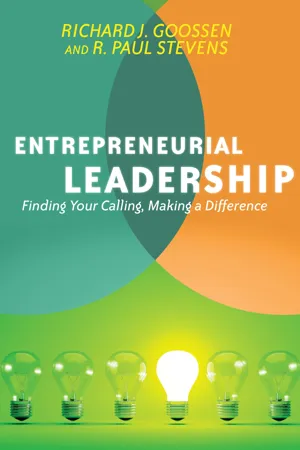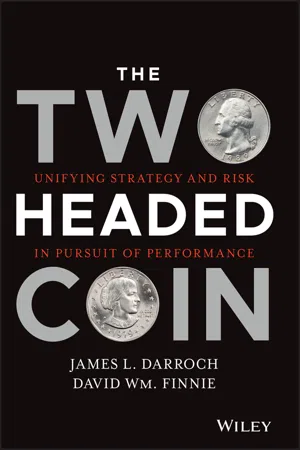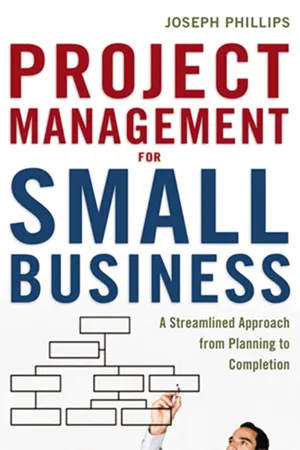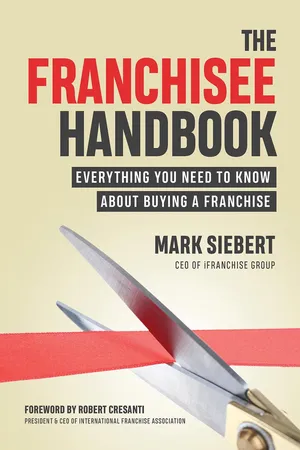Business
Risks and Rewards of Running a Business
Running a business involves both risks and rewards. Risks can include financial losses, market competition, and operational challenges. On the other hand, the rewards can encompass financial success, personal fulfillment, and the opportunity to make a positive impact. Balancing these risks and rewards is essential for the long-term success of a business.
Written by Perlego with AI-assistance
Related key terms
4 Key excerpts on "Risks and Rewards of Running a Business"
- eBook - ePub
Entrepreneurial Leadership
Finding Your Calling, Making a Difference
- Richard J. Goossen, R. Paul Stevens(Authors)
- 2013(Publication Date)
- IVP(Publisher)
Risk and Reward The capacity to manage risk, and with it the appetite to take risk and make forward-looking choices, are key elements of the energy that drives the economic system forward.Peter L. Bernstein, Against the GodsOne significant element of business in general and entrepreneurship in particular is the balance between risk and reward. Risk is undertaken for a reason—for gain that is determined to be reasonable in light of the possible reward. The word risk derives from the early Italian riscare , which means “to dare.”[1] Entrepreneurs constantly balance and assess daring to innovate with the likelihood of rewards in the event of success. We will first examine risk and then later turn to reward.Entrepreneurs are at the cutting edge of business or not-for-profits with their pursuit of innovation, typically doing what has not been tried previously and anticipating that they can master the forces of risk. The reality is that many entrepreneurs miscalculate risk and their businesses fail. On the other hand, entrepreneurs that successfully manage risk by judging and anticipating market trends reap commensurate rewards. Money is lost and gained in various sectors, from mineral exploration to high tech and social media. Between the headlines recounting the tales of the winners and losers is the ongoing tale of managing risk. While we admittedly approach these questions from the perspective of the Christian faith, we believe that people of all faith traditions can profit from the following analysis of risk and reward.The Risk-Taking Entrepreneur
Without some risk there will be no innovation. But successful entrepreneurs are neither risk averse nor risk addicted. Peter Drucker believes entrepreneurs are not risk-focused but opportunity-focused.[2] They minimize risk rather than maximize it. Drucker argues that innovation is considerably less risky than optimization. “Entrepreneurs, by definition, shift resources from areas of low productivity and yield to areas of higher productivity and yield. Of course, there is risk they may not succeed. But if they are even moderately successful, the returns would be more than adequate to offset whatever risk there might be.”[3] Thus, he concludes, “Theoretically, entrepreneurship should be the least risky rather than the most risky course.”[4] - eBook - ePub
The Two Headed Coin
Unifying Strategy and Risk in Pursuit of Performance
- James L. Darroch, David Wm. Finnie(Authors)
- 2021(Publication Date)
- Wiley(Publisher)
The firm must decide how much risk it can be paid to take through effective pricing and how much capital it needs to take to hold against uncertainty. In both cases there is a market-imposed limitation. In terms of pricing, customers will not pay for a firm's above-average defects or far-below market-quality standards of service. We will discuss this in connection to the importance of operational risk. And investors expect a certain return, which limits the amount of capital a firm can hold against the unexpected. Risk appetite and establishing and monitoring risk tolerances are strategic decisions, as is getting paid properly for the risks taken. Communication of these goals or objectives is an important element of embedding the firm's strategy into operations.This takes us back to a fundamental question: how do firms make money? The best firms develop a unique and sustainable strategic position that creates value for their customers by taking and, more importantly, managing risk.25 A business model is then developed to deliver on their strategic proposition or promise and at the same time identify and manage the risks inherent to the strategy. This is because the way the business is undertaken establishes key risk exposures unique to the strategy. Certain risks are inherent in the business undertaken—examples such as credit risk for lending institutions, fiduciary risk for deposit or investing operations, plant operation risks for manufacturing firms, liquidity risk, strategic risk, and reputation risk for all firms. And how the business is governed, including the risk management capabilities established, provides the firm's risk identification, monitoring, reporting, and response capabilities. This also contributes to the cost structure of the business.The implication of these choices is that the firm should primarily retain risks that are critical to its positioning and that the firm has, or can develop, the capabilities to manage such risks. Consider the cases of Apple and RIM in the smartphone market. Apple in many ways cannibalized its iPod to create a new mobile device for consumers. RIM, with its Blackberry network, created a secure email communication device primarily for business and government users. Apple initially targeted retail consumers and Blackberry initially thrived in the wholesale or industrial marketplace and with IT managers of large organizations. The strategic opportunities and risk in the two segments were initially distinct and required quite different resource allocations and organizational risk capabilities to create value for customers. For example, essential to RIM's strategy is a reliable network while Apple transferred network management to its telecom partners. This was a fundamental strategic decision that needed not only to be risk informed but also monitored to ensure the assumptions that led to the decision were holding. Because uncertainty is ever with us, we need to monitor to know when our risk capital walls are in danger of being breeched. We make decisions in a world of bounded uncertainty. - eBook - ePub
- Joseph Phillips(Author)
- 2011(Publication Date)
- AMACOM(Publisher)
In a project, risk management is an ongoing process. You’ll need a risk management approach and a method for cataloging identified risk events. Depending on the size of the project’s scope, your approach could be a simple spreadsheet or a complex flowchart of risk analysis and possible outcomes. Chances are, if your projects are like most projects, you’ll find that your risks are somewhere between inconsequential and colossal. Because risk management is an ongoing process, all stakeholders are involved: the project manager, the project team, customers, the business owner, and vendors. Everyone needs to help persistently identify risk events that could hinder your project’s success.Exploring Risk and Reward
There are two broad categories of risk: pure risk and business risk. Pure risks are events that can only hinder the project if they occur: injuries, fire, theft, and dangerous conditions. Pure risk events have no upside; they’ll only hurt the project if they aren’t accurately dealt with. Business risks, however, can have positive or negative outcomes for the project: cost savings with new vendors, time-saving techniques, the use of new materials, and investments in training. All of these examples can have a positive outcome, as they can help the project reach its objectives, or they can have a negative outcome, waste, if they don’t help the project.The best example of a business risk is the investment in the project. When your company launches a new project, there’s an investment in the time, materials, labor, and other out-of-pocket project expenses. If the project doesn’t succeed, if the client refuses to pay for the project, or if the project team doesn’t do the work with quality, then the investment in the project is lost. If the project is successful, then the reward for the investment in it is the profit. Risk and reward go together when it comes to business risk. As you may have already realized, there is no reward for pure risk in a project. - eBook - ePub
The Franchisee Handbook
Everything You Need to Know About Buying a Franchise
- Mark Siebert(Author)
- 2019(Publication Date)
- Entrepreneur Press(Publisher)
Chapter 3 UNDERSTANDING RISKEvaluating Your Risk ToleranceAll business decisions involve an element of risk, whether you are running a startup, changing your job, or choosing a franchise. All involve potential financial and personal minefields. That said, deciding to become a franchisee comes with its own special set of considerations. Not only are you putting your personal finances and reputation on the line, but you’re making a choice that might affect the franchisor, investors, and potential employees and vendors as well. That is why conducting a thorough risk assessment is a key element of choosing a franchise. As you begin to narrow your list of potential franchise opportunities, you should do all you can to identify sources of risk in your investment decision. Start by considering your tolerance for risk.As I said above, risk is a necessary part of every business decision. In fact, one of the first concepts taught in business classes is the “risk-reward” paradigm. In short, it means the greater the reward, the greater the risk. This paradigm is often illustrated using a risk-reward diagram such as the one in Figure 3–1 . As you can see from looking at the graph, the higher the reward you hope to achieve, the more you must risk.In looking at any point along this graph, it’s easy to see that lower risks will bring lower anticipated returns and higher risk will bring higher anticipated returns. But do not let the straight line fool you. The line represents the average anticipated return vs. perceived
Index pages curate the most relevant extracts from our library of academic textbooks. They’ve been created using an in-house natural language model (NLM), each adding context and meaning to key research topics.



